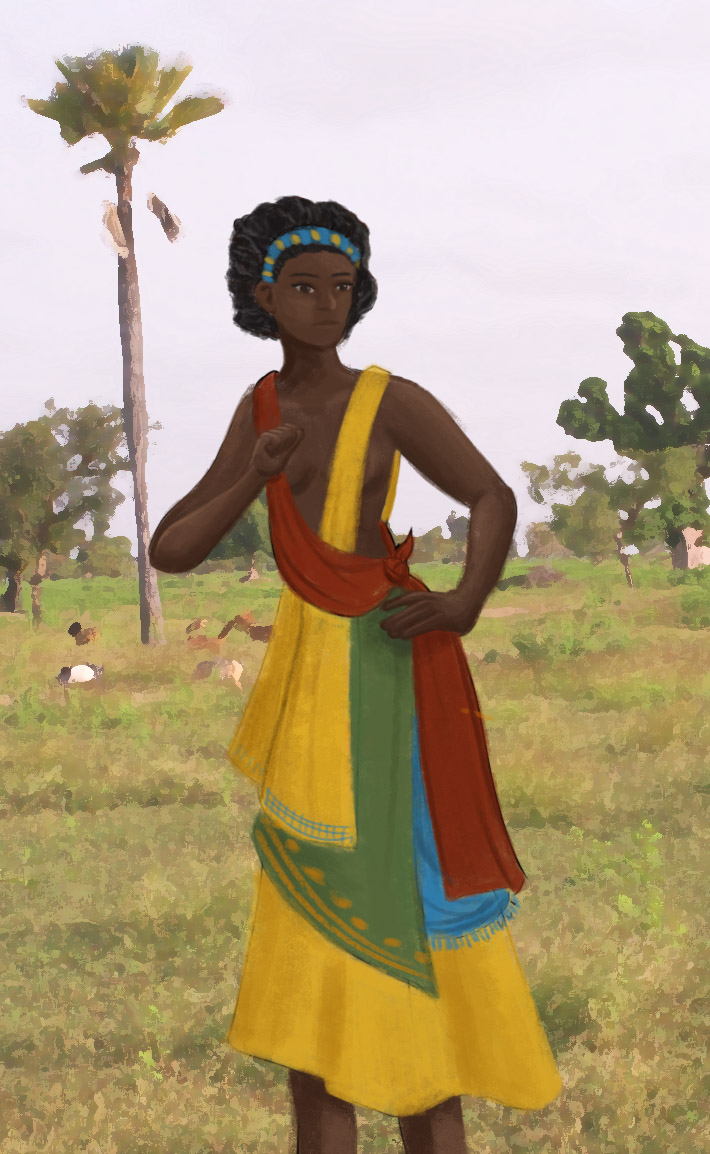Malo
Their women have no modesty and their men have no pride. They worship a god of death and venerate murderers. They are cowards on the battlefield and would rather sing songs and sew clothes than engage in proper war.
So why are there so many stories of defectors from the kingdom going to live among these barbarians?
The Malo people, who organized themselves into he kingdom of Maloa, are not well understood by outsiders. From their monotheistic religion to their unique blend of patriarchy with matrilineal descent, they raise a lot of eyebrows in the rest of Kaabara.
They they have an external reputation for being without morals or work ethic, these stereotypes are largely unfounded. Their culture is based on the Uyoyano church, which prioritizes order and community harmony above any personal transgressions. They abhor open warfare and aim to end conflicts quickly and decisively. Their most prized warriors are their archers, with the ideal of ending a battle by sniping the leader before it can even begin. This is seen as cowardly by their neighbours.
They they have an external reputation for being without morals or work ethic, these stereotypes are largely unfounded. Their culture is based on the Uyoyano church, which prioritizes order and community harmony above any personal transgressions. They abhor open warfare and aim to end conflicts quickly and decisively. Their most prized warriors are their archers, with the ideal of ending a battle by sniping the leader before it can even begin. This is seen as cowardly by their neighbours.
Naming Traditions
Family names
Family names are not used. Malo people use the pattern Father's Name-Mother's Name + First Name as their full name. When they have left their hometown, they add the name of their hometown at the end as an additional marker.
Culture
Common Dress code
They typically wear loose, colourful clothing that drapes over the body. The colour purple is reserved for the royal family, but otherwise, even peasants typically have some colour in their clothes. Formal clothing often depicts stories and legends woven into the fabric. They are very open about nudity and most women's clothes only drape over the chest without fully concealing the breast.
Ideals
Beauty Ideals
Malo people typically have lighter, earth-toned eyes like hazel or pale green. The more colourful the eyes, the more beautiful. Height is considered very beautiful, and both men and women are considered attractive for being tall and thin. They prefer prefer a deep, red-toned brown for skin. For women, the idealize soft, round facial features. Breasts are not sexualized or considered a significant factor in a woman's attractiveness.
Gender Ideals
Although their society is predominantly patriarchal, woman hold a great deal of power and rights. Women are expected to be active contributors to the family and manage a household's money. The ideal woman is smart and authoritative. Woman are also responsible for textile production - the only part men play in the production and distribution of textiles and clothing is harvesting the materials.
The ideal man is a warrior-poet. Malo people place a large emphasis on stories and poetry. Though noble women are encouraged to learn to read and write, creative writing is more of a man's domain. Written works are expensive and usually only found in upperclass households, so the common people rely on respected male storytellers that travel from village to village and share histories in exchange for food and shelter.
The ideal man is a warrior-poet. Malo people place a large emphasis on stories and poetry. Though noble women are encouraged to learn to read and write, creative writing is more of a man's domain. Written works are expensive and usually only found in upperclass households, so the common people rely on respected male storytellers that travel from village to village and share histories in exchange for food and shelter.
Major organizations
Maloa, aka, the Kingdom of the Malo
Related Organizations



